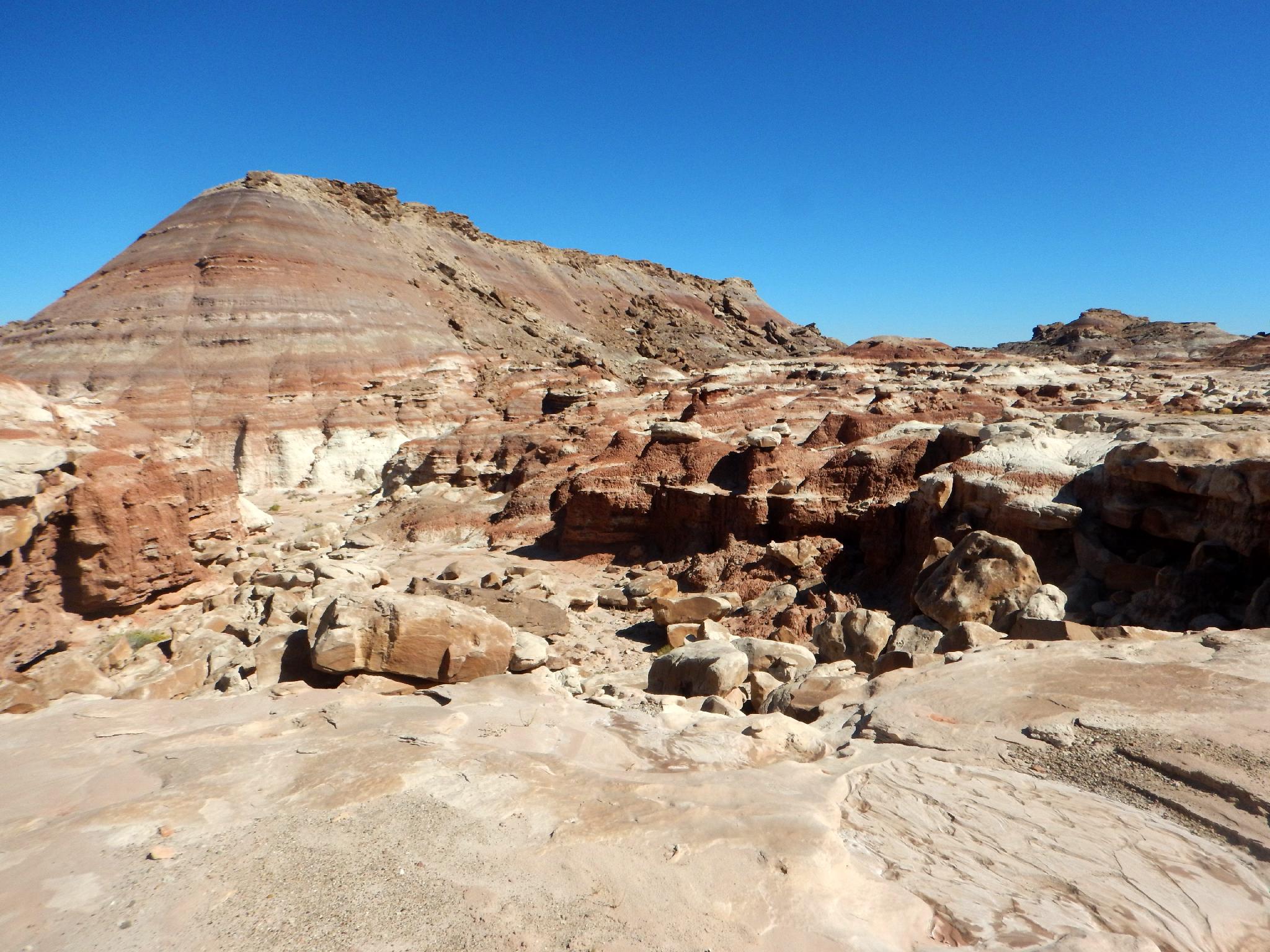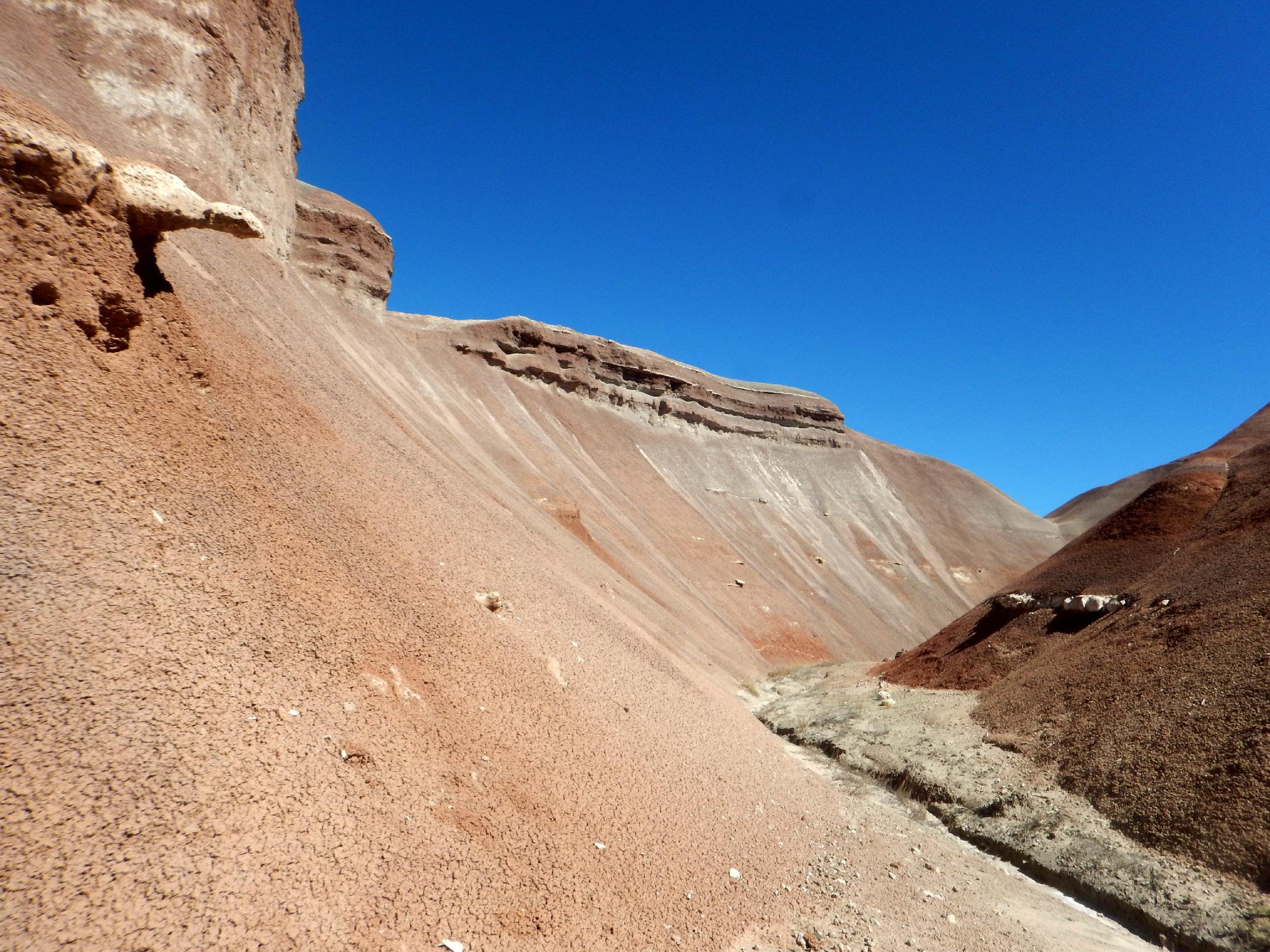
 Burpee Dinosaur Quarry
Burpee Dinosaur Quarry
Hanksville
Overview
|
Sat 51 | 35 |
Sun 40 | 25 |
Mon 38 | 16 |
Tue 38 | 15 |
Wed 40 | 18 |
| View Full Weather Details | ||||
|
Sat 51 | 35 |
Sun 40 | 25 |
Mon 38 | 16 |
Tue 38 | 15 |
Wed 40 | 18 |
| View Full Weather Details | ||||
When I hear the term Dinosaur Quarry, I have visions of a Flinstonian world with large dinosaurs wandering around and bones the size of houses littering the ground. It turns out unless you have a bit of paleontology knowledge, you may not actually be able to find any dinosaur fossils. Seeing them requires a bit of knowledge and a keen eye for details.
If you don't have an paleontology background, I still highly recommend visiting the quarry. The area around the quarry is a spectacularly vibrant landscape of colors and textures. This is badlands desert in its Technicolor glory. An afternoon spent wandering the area makes for an excellent time out.
From the BLM Overview:
Utah's spectacular geology preserves the most complete dinosaur record in the United States. From this 160-million-year record, Utah is most famous for its dinosaurs from the Late Jurassic Morrison Formation (152-145 million years old), with world-renowned sites such as Dinosaur National Monument and the Cleveland-Lloyd Quarry. Even so, hundreds of miles of stunning Morrison badlands have never been examined by trained paleontologists. Rock hounds have long known that the Hanksville area of south-ce3ntral Utah preserves many large dinosaurs, but no paleontological research had been done in the area. When Burpee Museum of Rockford, Illinois, contacted the Utah Geological Survey two years ago about where to find some big dinosaurs for a new exhibit hall, they recommended the Hanksville area. The local Hanksville Bureau of Land Management (BLM) office showed them a few sites outside of town. The Burpee paleontologists quickly realized they were looking at a major dinosaur bone bed where possibly dozens of dinosaur skeletons are preserved. After securing excavation permits for the site from the BLM, the research began.
The Hanksville-Burpee Dinosaur Quarry is a gigantic site. It represents a large eastward flowing, braided-river channel with isolated dinosaur bones and many relatively intact skeletons shallowly buried in an area about a third of a mile long and 300 feet wide (roughly 10 acres). The site compares well with the largest known Morrison dinosaur sites, such as the Carnegie Quarry and Dinosaur National Monument and is the southernmost such megasite known in the Morrison Formation outcrop belt.
Five species of Dinosaur have been identified in the field: Allosaurus (30 ft long), Stegosaurus (30 ft long), Camarasaurus (60 ft long), Apatosaurus (75 ft long), Diplodocus (90 ft long)
Full Details
Login For Full Details!
- OR if you are not yet registered -
Register
(It is free and easy.)


